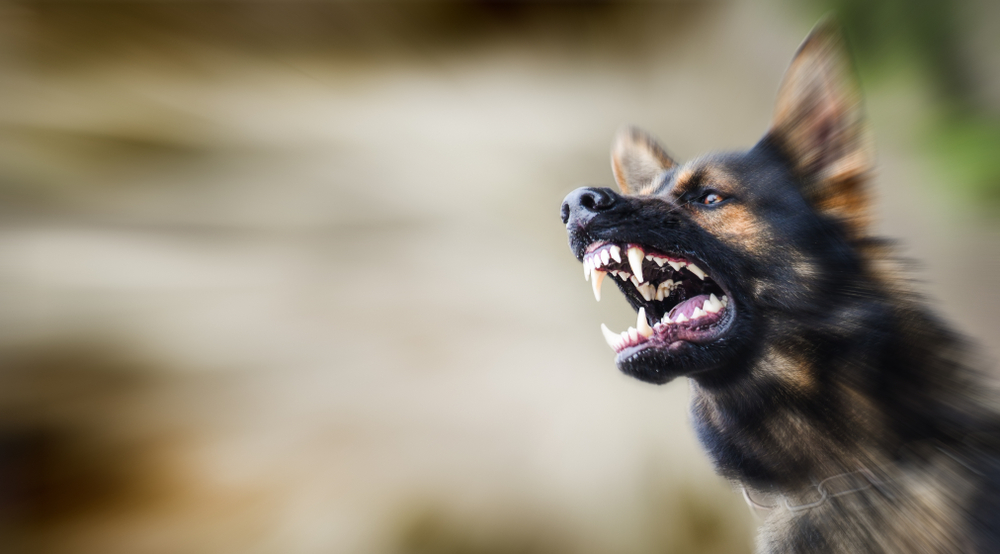
Dogs also experience anxiety just like human beings. The different causes of anxiety in dogs include aging, fear, and separation. While anxiety is a normal occurrence, disproportionate levels of anxiety can lead to aggressive behaviors if left unchecked. That's why you should teach your children how to interact safely with dogs, and they should be able to identify an anxious or aggressive dog. In this post, you'll learn the difference between aggression and anxiety, which will serve as your guide when managing your dog's behavior.
Anxiety or Aggression?
Anxiety is defined as a feeling of intense worry or fear, which usually stems from a threatening situation and even unknown sources. Dogs also feel stressed and become nervous when introduced to new environments, people, and events. When anxiety results in harm, it is then considered as aggression. Therefore, it is important that you make sure you keep your dogs free from anxiety to keep them healthy and harmless. Aggression is the most dangerous sign of dog anxiety, which can be direct or indirect, depending on the situation. In direct aggression, an anxious dog acts aggressively toward other people, other animals, or even their trainer or owner. Indirect aggression can also be dangerous. It usually happens when the pet owner or another person comes between the source of the aggression and the dog. Excessive barking or growling are considered aggressive behaviors, causing a loud source of noise and annoyance, even if the anxious dog is prevented
from causing harm to others.

Causes Here are the possible causes of anxiety and aggression in dogs:
- Separation: Many dogs experience anxiety when they are left alone or are separated from family members.
- Fear: A fear-related anxiety can be caused by strange animals or people, loud noises (e.g., firecrackers), new environments, visual stimuli (e.g., umbrellas, hats), and specific situations like car rides or a visit to the veterinary office.
- Aging: Your dogs grow the same way as your children grow. However, older dogs may also experience age-related anxiety due to cognitive dysfunction syndrome or CDS, wherein memory, perception, awareness, and learning start to decline. It's somehow similar to the signs and symptoms of the early stages of Alzheimer’s disease, which leads to confusion and anxiety.
Signs and Symptoms Because stress and anxiety can lead to aggression, the signs and symptoms may range from mild to severe as dogs have varying levels of anxiety toward specific stimuli. While some dogs tend to bark or involuntarily urinate or defecate inside the house to show that their anxious, others can become destructive, causing harm to people and properties. Here are the other signs and symptoms of anxiety and aggression:
- Repetitive or compulsive behaviors
- Panting
- Excessive barking
- Restlessness
- Pacing
- Drooling
- Depression
Severity With aggression, dogs present destructive behavior, which is very common with dogs experiencing separation anxiety. The property damage is usually located in doorways, windows, and other entry and exit points. Dogs tend to become overly aggressive when they are in a state of heightened anxiety. They can harm other animals, people, and even themselves. Painful injuries can result from attempts to break out of windows, doors, and dog crates, and which also mean expensive veterinary treatments. A Los Angeles dog bite attorney should be consulted if your dog already causes harm to other people and properties. In this way, you'll be advised of the legal consequences and appropriate legal actions you need to take.
Treatment Options Don't risk your family's as well as your dog's lives by neglecting anxiety and aggression. Talk to a veterinarian immediately if you observe unusual changes in your dog's behavior. The veterinarian will help you develop and carry out an effective treatment plan, such as medications, preventive strategies, and a combination of training. Here are the treatment options for dog anxiety and aggression:
- Training and Counterconditioning: If your dog shows signs and symptoms of anxiety, counterconditioning can help change the response of your dog to certain stimuli by replacing the anxious behavior with more positive or desirable behavior, such as sitting, keeping still, or focusing on the owner.
- Desensitization: By repeatedly exposing your dog to the main source of anxiety in smaller doses, you can reinforce a rewarding positive behavior to help manage anxiety.
- Anxiety Medications: If your dog is overly aggressive and natural therapies become ineffective, your veterinarian may prescribe anxiety medications, such as antidepressants (e.g., fluoxetine and clomipramine). Senior dogs with CDS may benefit from Selegiline, a drug used to treat chronic anxiety in dogs and help reduce some of the signs and symptoms of CDS.
Conclusion Anxiety is always part of the aggression. It means that prolonged stress and anxiety can cause aggression to your furry friends. While there's a difference in the causes, signs and symptoms, severity, and treatment options, they tend to correlate with each other. Proper socialization and reading your dog's body language can help prevent the development of anxiety. Make it a point to introduce your dog to new places, people, and animals gradually to avoid destructive behaviors and to keep your dog, family, and other people safe.



























